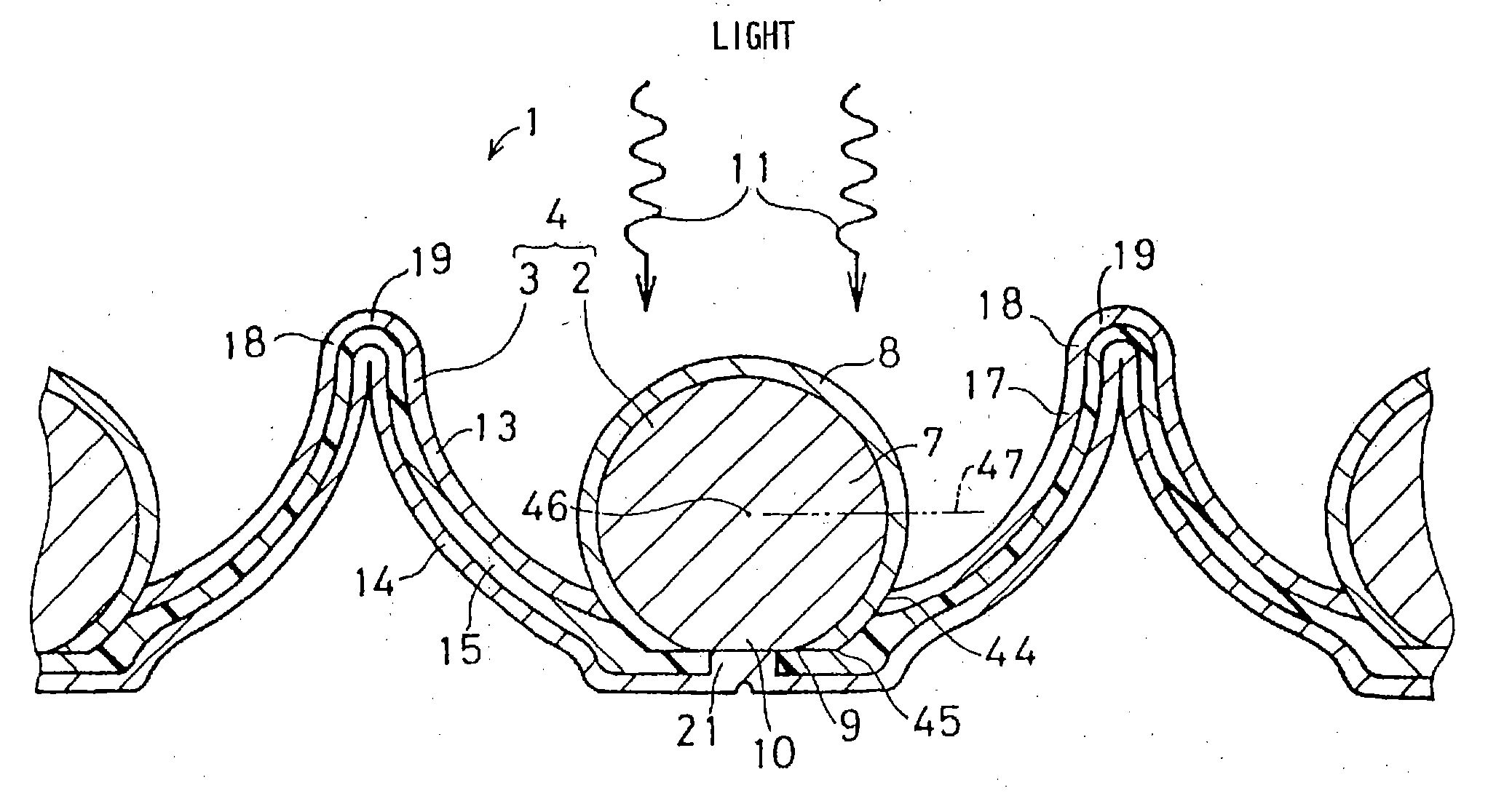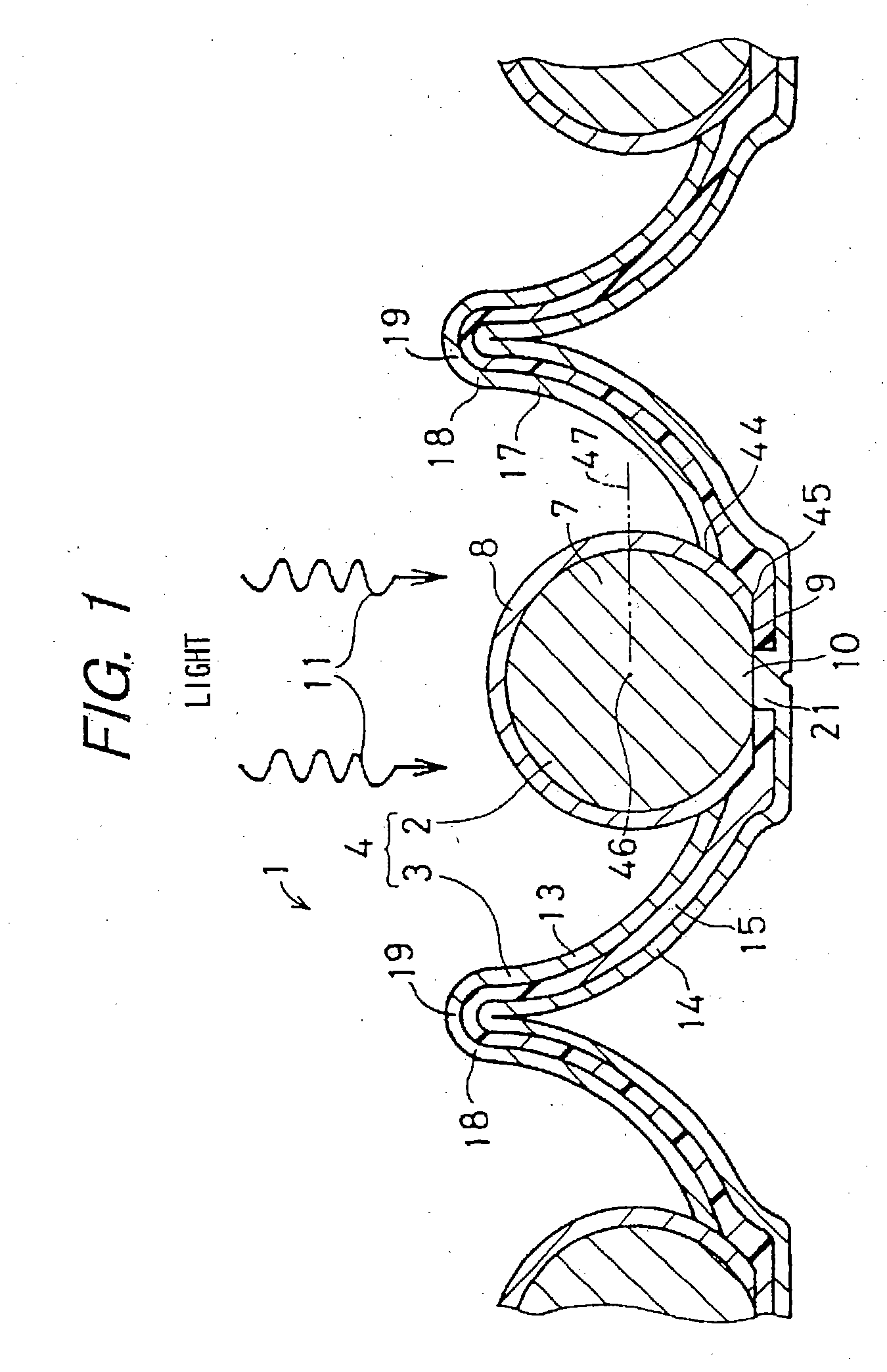Photovoltaic apparatus including spherical semiconducting particles
- Summary
- Abstract
- Description
- Claims
- Application Information
AI Technical Summary
Benefits of technology
Problems solved by technology
Method used
Image
Examples
Embodiment Construction
[0066] Now referring to the drawings, preferred embodiments of the invention are described below.
[0067]FIG. 1 is an enlarged sectional view of part of a photovoltaic apparatus 1 according to an embodiment of the present invention. FIG. 2 is a sectional view showing the structure of the photovoltaic apparatus 1. FIG. 3 is an exploded perspective view of the photovoltaic apparatus 1 of FIG. 2. The photovoltaic apparatus 1 has the following basic structure. An assembly 4 of a plurality of generally spherical photoelectric conversion elements 2 and a support 3 that is mounted with the photoelectric conversion elements 2 is buried in a filler layer 5 made of a transparent synthetic resin material such as PVB (poly(vinyl butyral)) or EVA (ethylene vinyl acetate). A transparent protective sheet 6 made of polycarbonate or the like is provided on the light source (e.g., sunlight) side of the filler layer 5 and is fixed to it. A waterproof back sheet 12 is fixed to the surface of the filler ...
PUM
 Login to View More
Login to View More Abstract
Description
Claims
Application Information
 Login to View More
Login to View More - R&D
- Intellectual Property
- Life Sciences
- Materials
- Tech Scout
- Unparalleled Data Quality
- Higher Quality Content
- 60% Fewer Hallucinations
Browse by: Latest US Patents, China's latest patents, Technical Efficacy Thesaurus, Application Domain, Technology Topic, Popular Technical Reports.
© 2025 PatSnap. All rights reserved.Legal|Privacy policy|Modern Slavery Act Transparency Statement|Sitemap|About US| Contact US: help@patsnap.com



